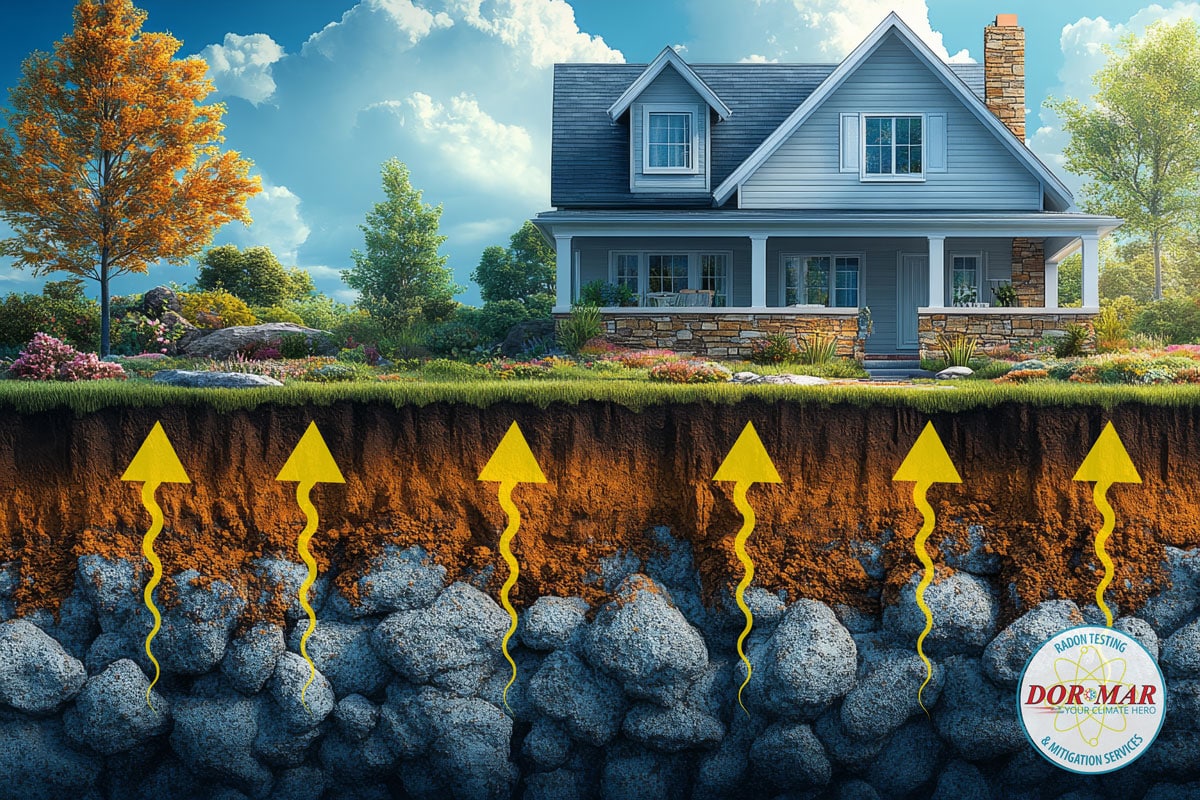Radon is an invisible threat lurking in homes across the country. This radioactive gas can seep into your home without any warning signs, putting you and your loved ones at risk.
Many homeowners overlook radon because it has no smell, taste, or immediate symptoms. However, prolonged exposure can cause serious health issues, including lung cancer.
Beyond the health concerns, ignoring radon can also hit your wallet. From expensive medical bills to a drop in your property value, the costs of inaction can be steep.
In this post, we’ll explore the dangers of radon, its financial consequences, and how you can protect yourself and your home.
What Is Radon and Why Is It Dangerous?
Radon is a naturally occurring radioactive gas produced by the breakdown of uranium in soil, rock, and water. It moves through the ground and can enter homes through cracks in the foundation, gaps around pipes, and even well water.
Since radon is odorless and invisible, the only way to detect it is through testing. The Environmental Protection Agency (EPA) recommends taking action if radon levels exceed 4 picocuries per liter (pCi/L).
Long-term exposure to high radon levels increases the risk of lung cancer. In fact, radon is the second leading cause of lung cancer in the U.S., responsible for thousands of deaths each year.
Despite its dangers, many homeowners don’t test for radon or take mitigation measures, leaving themselves vulnerable to both health and financial consequences.
The Health Risks of Radon Exposure
How Radon Causes Lung Cancer
Radon breaks down into radioactive particles that can be inhaled. Once inside the lungs, these particles damage lung tissue, leading to an increased risk of cancer.
Smokers face an even greater risk. The combination of smoking and radon exposure significantly raises the chances of developing lung cancer compared to non-smokers.
Since lung cancer often develops without early symptoms, many people don’t realize the damage until it’s too late. This is why early testing and prevention are crucial.
Symptoms of Radon Poisoning
Unlike carbon monoxide poisoning, radon exposure doesn’t cause immediate symptoms. Instead, it leads to long-term damage that may not be noticeable for years.
Symptoms of lung cancer from radon exposure include:
- Persistent cough that won’t go away
- Chest pain or tightness
- Shortness of breath
- Frequent lung infections like pneumonia
- Unexplained weight loss
Since these symptoms often appear in later stages, regular radon testing can help prevent serious health issues before they develop.
The Hidden Financial Costs of Ignoring Radon
Home Devaluation Due to Radon
When selling a home, radon can be a major red flag for buyers. If your home has high radon levels, potential buyers may negotiate a lower price or request mitigation before closing the deal.
Homes with untreated radon problems can lose value, making it harder to sell. Buyers today are more informed about indoor air quality and will likely test for radon before making an offer.
Higher Medical Expenses from Radon-Related Illnesses
Medical treatments for lung cancer are expensive. Chemotherapy, radiation, and surgeries can cost thousands of dollars, not to mention lost income due to illness.
Taking preventative steps, like radon testing and mitigation, is far more affordable than dealing with the financial burden of a major illness.
How to Test for Radon in Your Home
Testing for radon is simple and affordable. Home radon test kits are available online or at local hardware stores. These kits typically involve placing a device in the lowest level of your home and leaving it for a few days before sending it to a lab for analysis.
For more accurate results, professional radon testing services can provide a detailed assessment of your home’s radon levels. If your home has high radon levels, it’s important to take action quickly to reduce exposure.
Effective Radon Mitigation Solutions
Reducing radon levels in your home is possible with the right mitigation techniques. Common methods include:
- Sub-slab depressurization: A ventilation system that pulls radon from beneath the home and vents it outside.
- Sealing cracks and gaps: Prevents radon from seeping in through foundation cracks and openings.
- Improving home ventilation: Increasing airflow can help reduce radon concentration indoors.
A certified radon mitigation specialist, like Dor-Mar Radon Testing & Mitigation, can assess your home and recommend the best solution to keep your indoor air safe.
Final Thoughts: Why You Should Take Action Today
Radon is a silent threat that can have devastating consequences if ignored. Testing your home for radon is a simple step that can prevent serious health risks and financial burdens.
By taking action now, you can protect your family’s health, maintain your home’s value, and avoid costly medical bills down the road.
If you haven’t tested your home for radon yet, now is the time. A small investment in prevention can save lives and safeguard your future.













